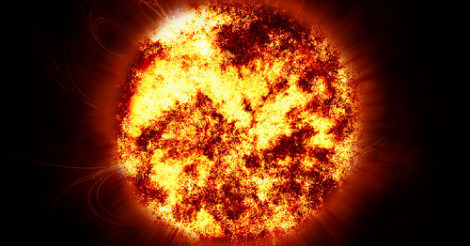
 )
)Passion Week seems like an appropriate time to come back to more theological topics. Within the science and theology conversation, I periodically come across variations on this question: “How do you choose when to accept a miraculous explanation and when to seek a scientific explanation?” There is a sentiment that science is pushing aside certain traditional miracles, notably creation but potentially others like the parting of the Red Sea. The miracle of greatest concern is Jesus’ resurrection; if I were to reject the resurrection on scientific grounds, could I still consider myself a Christian? And if I affirm any miracles, why pick and choose instead of just accepting them all?
I definitely understand where the question is coming from, because we’ve drawn a sharp line between the natural and the supernatural. Nevertheless, my personal take is largely to reject the premise. I don’t think understanding the mechanism by which God accomplishes his goals makes them any less miraculous. I suppose there is a concern that if we know how God did something we might be able to replicate it ourselves. And if we can also perform the miracle, then the ability to perform that feat no longer sets God apart. But that presumes once we know how that we can definitely achieve the same results, and I don’t think that’s necessarily the case.
Consider the stars in the heavens. We’ve learned much about the chemicals they are made of and the physical principles which describe how they produce heat and light. We have detailed models of how they could form in terms of well-understood physics. And yet we are nowhere near the capability to make one ourselves. For starters, we would need more raw material than the entire Earth can provide. And then where would you put it?
The resurrection of Jesus is obviously a very different sort of phenomenon than the birth of a star, with different constraints. Practically speaking, we have no means to investigate whatever mechanisms may have been involved in such a singular event so many years ago. In principle, I don’t think it’s impossible that if we had access to the resurrection as it was happening and appropriate measurement equipment, we might observe processes that could be described in terms of energy, atoms, cells and organs. After all, the significance of the incarnation is that God became flesh, participating with us in the experience of physicality. Then again, maybe whatever happened defies our existing scientific categories. I don’t see how to know either way, and I can live with that uncertainty. I am content that there are good reasons to believe the resurrection did happen even if I am ignorant of the mechanics.
At the same time, I see no reason not to pursue understanding through science of questions that science can answer. I don’t draw a distinction between things science can describe and things God did or does. In fact, I think we can know God better by understanding how he works. I also think it can enhance our worship of God rather than diminishing it. After all, knowing just what it would take to make a star only further highlights how remarkable it is that God could make so many while we are nowhere close to making one.
Andy has worn many hats in his life. He knows this is a dreadfully clichéd notion, but since it is also literally true he uses it anyway. Among his current metaphorical hats: husband of one wife, father of two teenagers, reader of science fiction and science fact, enthusiast of contemporary symphonic music, and chief science officer. Previous metaphorical hats include: comp bio postdoc, molecular biology grad student, InterVarsity chapter president (that one came with a literal hat), music store clerk, house painter, and mosquito trapper. Among his more unique literal hats: British bobby, captain’s hats (of varying levels of authenticity) of several specific vessels, a deerstalker from 221B Baker St, and a railroad engineer’s cap. His monthly Science in Review is drawn from his weekly Science Corner posts — Wednesdays, 8am (Eastern) on the Emerging Scholars Network Blog. His book Faith across the Multiverse is available from Hendrickson.

Leave a Reply